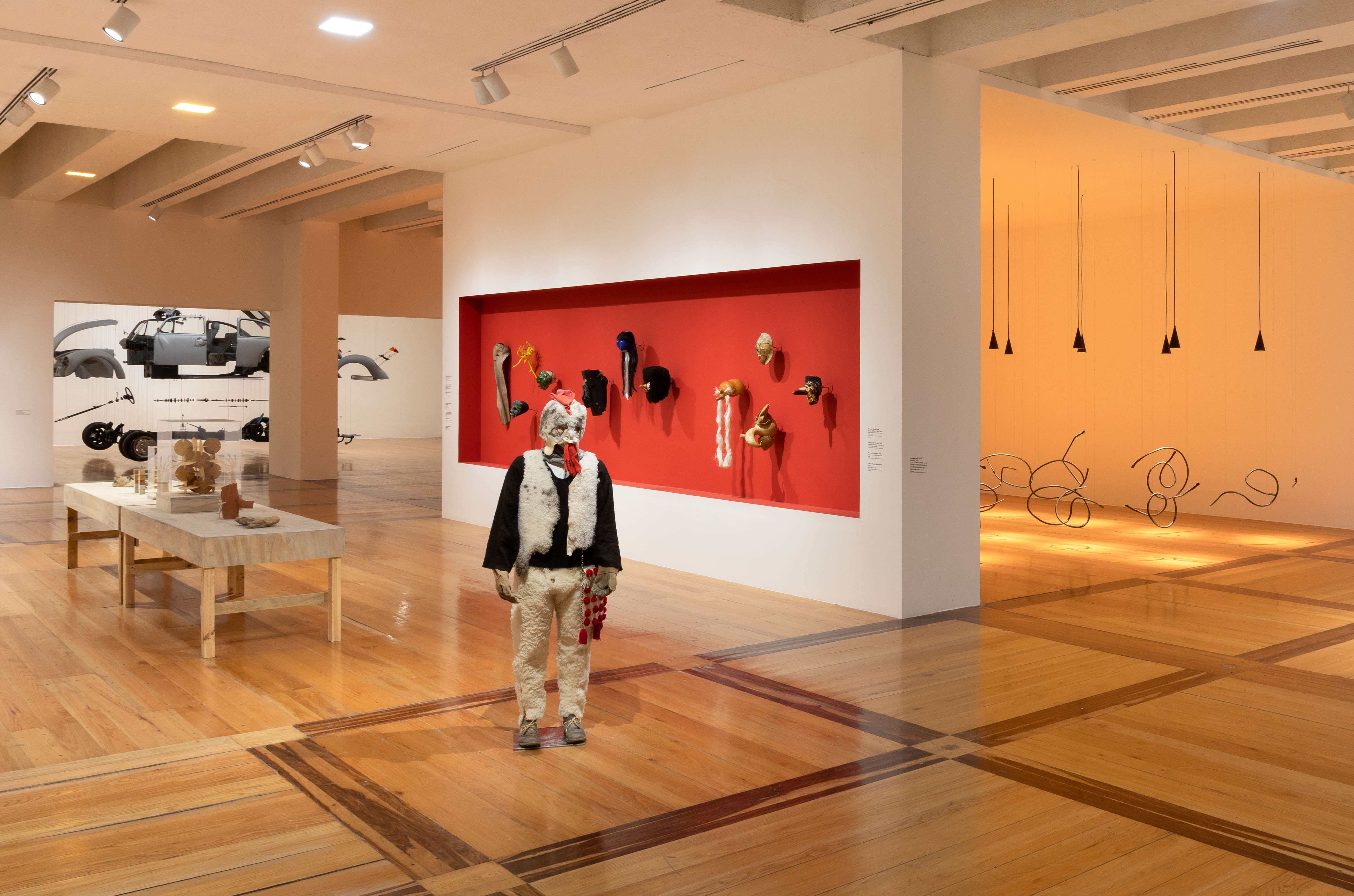
Review
Damián Ortega: A Walk Through Picks and Corn
by Ana Cadena Payton
Reading time
8 min
The presence of Damián Ortega in Monterrey is significant not only for the quality of the work but also because it is the artist's first retrospective in the Americas. Curated by José Esparza Chong Cuy, Damián Ortega: Pico and Elote [Corn and Industry] opened on August 29, 2023, at the MARCO Museum, encompassing thirty years of sculpture, video, installation, textiles, and photography, as well as a space dedicated to Alias, the artist's publishing project.
On November 10 of the same year, at the facilities of the Center for Research, Innovation, and Development of the Arts (CEIIDA), Guillermo Santamarina presented Mil Hilos: Manifiesto en contra de las imposiciones tediosas [A Thousand Threads: Manifesto Against Tedious Impositions], a book that emerged from a six-day road trip with curator Mauricio Marcin, published by Damián Ortega's own publishing house. The text, set to the beat of Spotify playlists, provides a variety of anecdotes from a life dedicated to art, culture, public institutions, and, why not? Parties.
In addition to a signed copy of the book, what I retain from Santamarina's presentation is something that made a lot of sense to me. If my memory serves me right, the words spoken at the end were something like "let's reserve the right not to take ourselves too seriously," a postulate that undoubtedly resonates with the origins of Damián Ortega's production, as well as with the sense of humor that characterizes his work.
With that in mind, I will try to share some observations in a laid-back manner, in the form of brief notes, as if it were a road trip or a casual walk through the museum. I hope this assembly of loose ideas serves to continue the conversation regarding Ortega's exhibition.
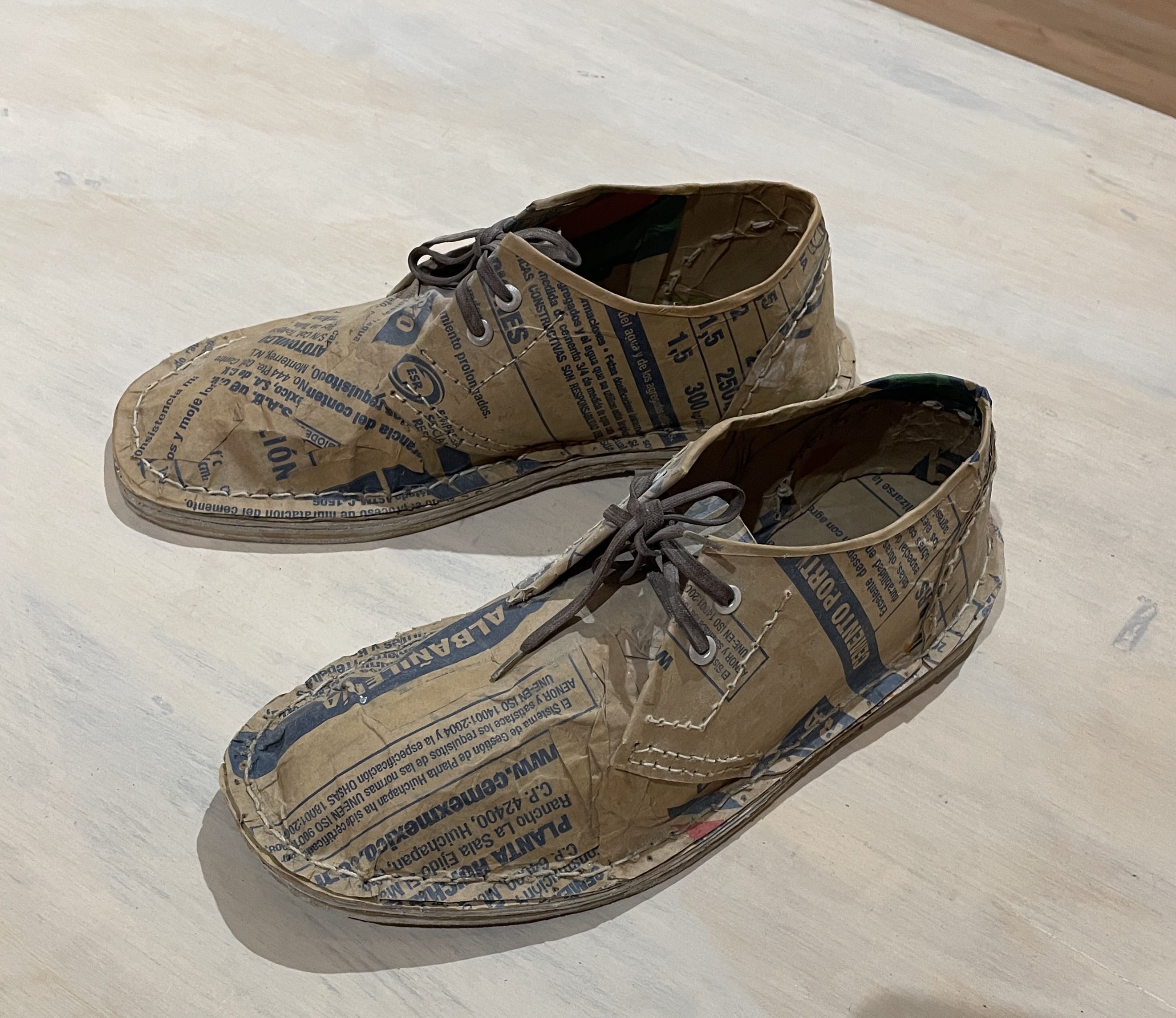
Monkeys and Masks
I find myself at the beginning of the tour and let myself be amazed by the body of work. On one wall hang eleven urban-primitivist masks, their static gazes fixed on shoes and gloves meticulously made with cement bags (Segunda piel [Second skin] and Self Made Shoes). Further back, I come across several hand-embroidered fabrics, where the hours of work invested by the artist are meticulously timed (One hour. Five minute intervals). It’s hard to overlook the Módulo de construcción de tortillas [Construction of Tortillas Module], a delicate sculpture elaborated not only by the artist but also by those who work in the neighborhood tortilla shop.
I continue walking, and as if suddenly belonging to another species, I struggle to recalibrate my gaze. Standing in front of ADN Monkey Sticks (Brochetas de mono), whose sticks manipulated by chimpanzees hang in a spiral in the center of a showcase, which is more Victorian furniture than an exhibition device, I feel as if I suddenly understand something. I jumped from the tool to the idea. That's how it goes with conceptual art; its reading involves a certain mental effort and, in the best cases, a bit of humor.
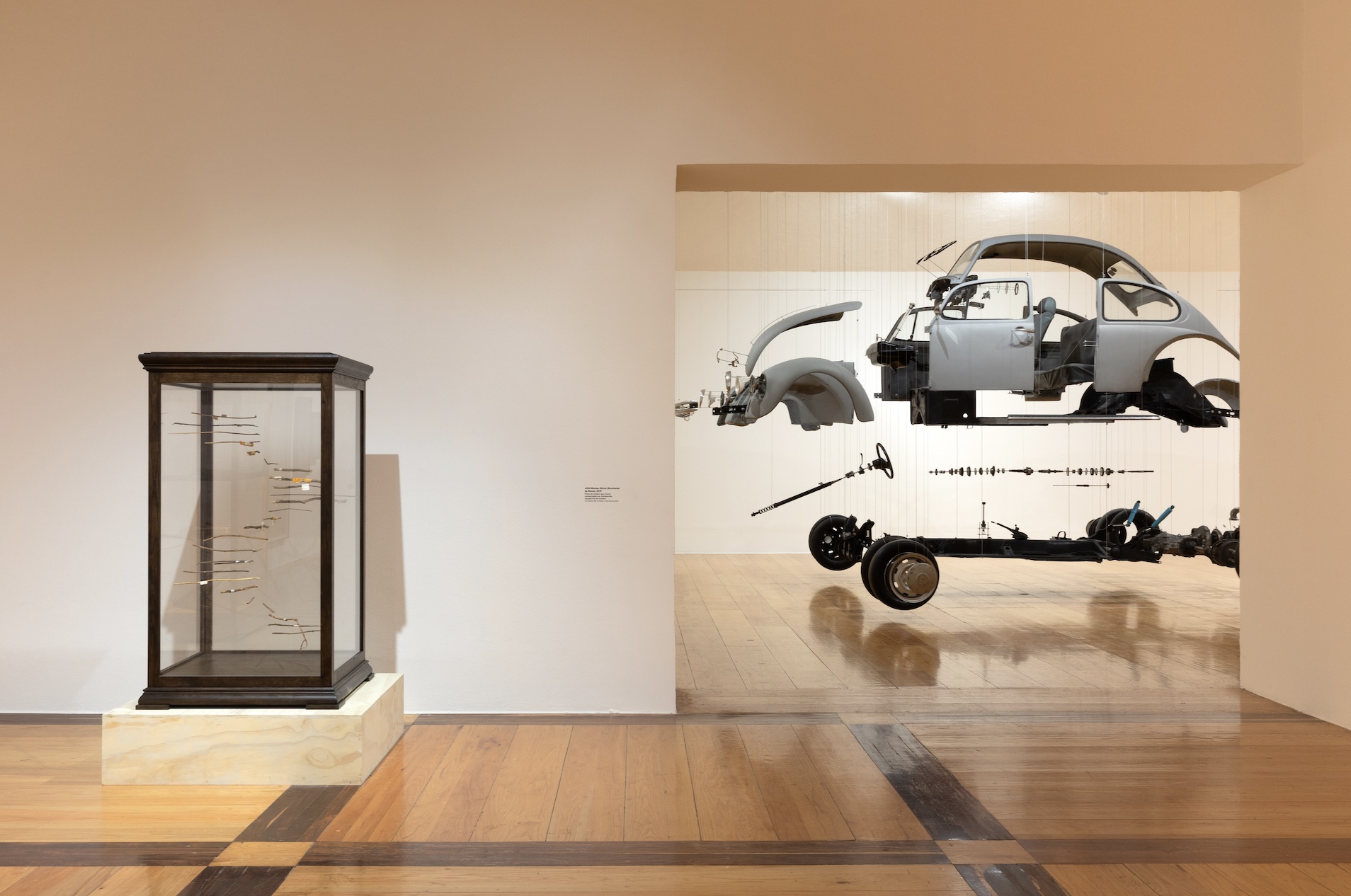
Diagram of a Volkswagen that Transcends its Function
I stop as I approach the Cosmic Thing room so that a bunch of visitors can finish their selfie session with the town car. Undoubtedly, it is a spectacular piece, not only because of its popularity on social media and specialized magazines but also because, like any good protagonist, the piece (or rather, pieces) effortlessly dominates the space, hiding assembly difficulties. For some reason, its enormity and lightness lead me to a childhood memory where I am studying the diagram of a car, its clean parts disassembled for a precise understanding of its mechanics.
I slowly take a complete turn around the Volkswagen, as if I, too, belong to the gears, and I realize that it is no longer just a car. Obviously, it is a symbol. For an artist, there is no diagram that can clarify their work. Things are discovered in an accidental way. At some point, there was a big bang in Ortega's life for thousands of eyes to gravitate toward his stellar pieces today. The initiation is well documented. I think of Autoescuela*1, the wonderful text by María Minera detailing what the Friday workshop meant not only for Ortega but also for Jerónimo López (better known as Dr. Lakra), Abraham Cruzvillegas, Gabriel Kuri, and, of course, Gabriel Orozco.
No One Controls the Universe (Wednesdays and Sundays)
I tried to place myself at the center of the universe, but it was in vain. As soon as I approached Controller of the Universe, a security guard came with a refusal. My spiel about the nature of the piece was useless since it was actually an institutional policy. I was informed that Wednesdays and Sundays are free, therefore, the amount of the public varies, meaning that the risk of damage to the artwork is too high.
I resign myself in a corner and start to imagine Ortega walking through a market in Berlin in search of tools as if it were the art alley in the Old Quarter, his trained eye and decisive hand selecting the raw material for his universe. Picks, shovels, axes, keys, saws, scissors, sledgehammers, hammers, screwdrivers, trowels, levels, and pliers, a collection of gadgets that, arranged in a certain way, magically jump from the mundane to the sacred.
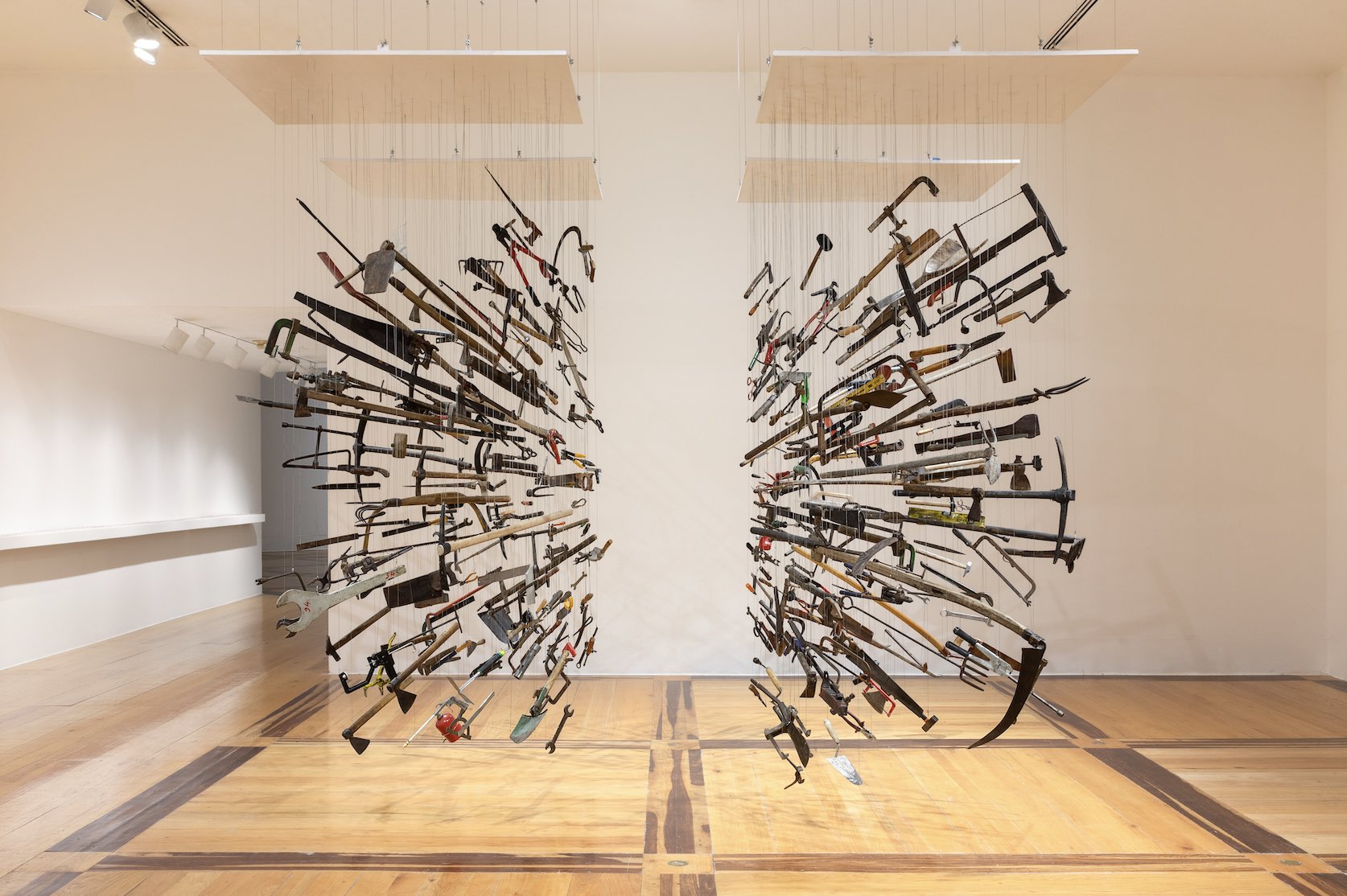
Dry Ice for an Inverted Architecture
As I progress, I come across a kind of igloo, but it can't be more different. Paisaje 2 [Landscape 2] is a styrofoam cube inspired by the houses of troglodyte villages. To get a better idea, just remember Star Wars: Episode IV - A New Hope, many of its scenes filmed in the desert of Tunisia. The original constructions are the result of an inverted architectural effort, where space is achieved by hand-carving to bore into the earth and rock.
In the case of Paisaje 2, the styrofoam, a thermal insulator that simulates the earth in its ability to maintain an ideal temperature, is carved. For the ancestors, that temperature was 17°C throughout the year, facilitating crop preservation. Equally important is the camouflage capacity that such architecture provides. During the Punic Wars, villages eluded the Romans by practically living inside the earth, easily disappearing on the horizon. The same happens on Tatooine and the Owens Farm of Luke Skywalker's relatives, who are eventually detected and killed by imperial troops. I return to the present and admire the whiteness of the styrofoam perfectly combined with the museum's white cube. Although it is not camouflage in the most literal sense, it integrates well into the exhibition space.
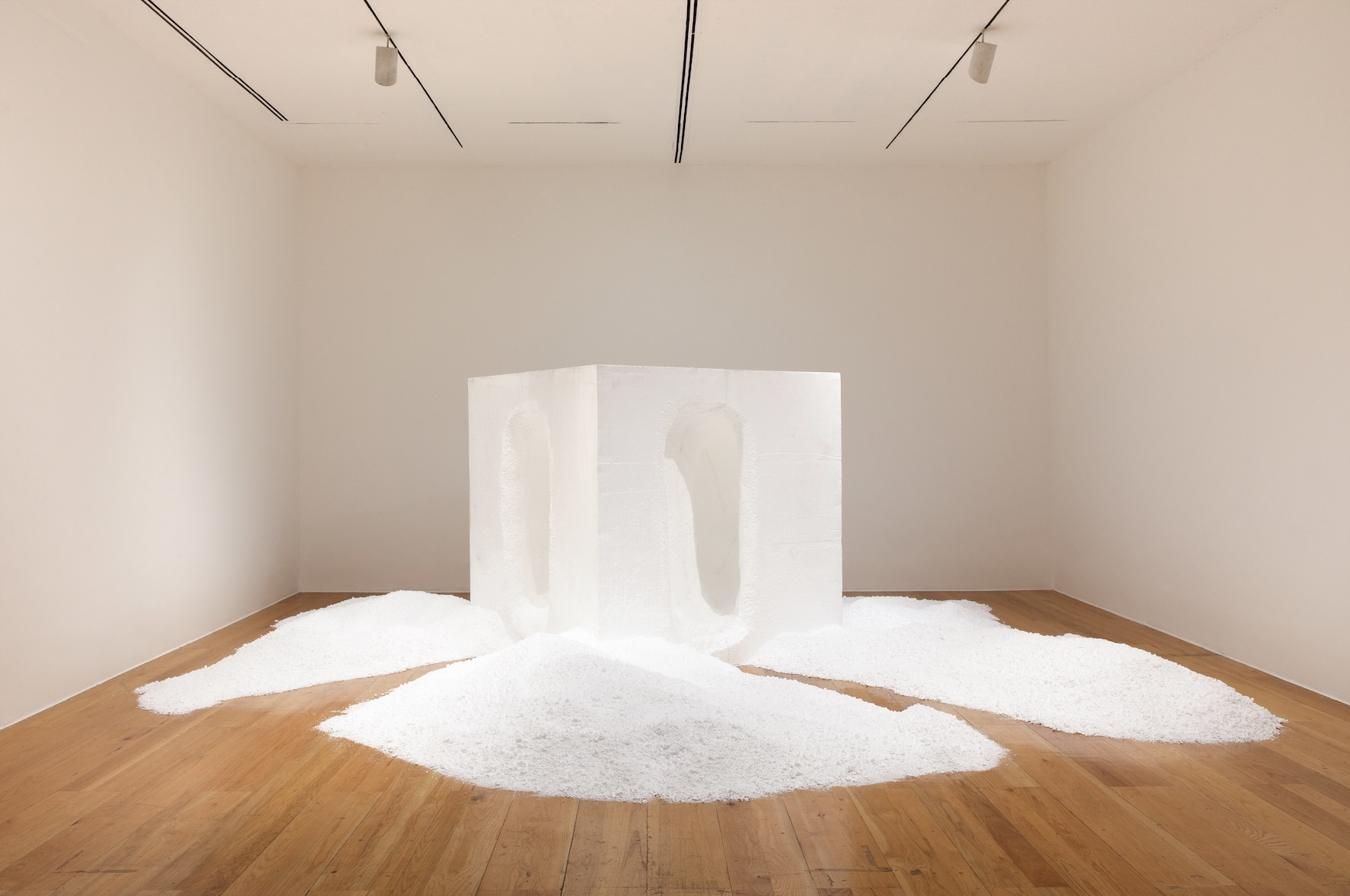
The Book Sculpture
I reach the end of the path. After the monumentality of Il Uovo, as well as the seriality of plastic transformers, I stop in the small space dedicated to Alias Editorial and breathe. At first glance, it feels like a typical gift shop at the museum's exit, but it is actually another artwork. The small space lined with books, with its table and chairs waiting for someone to drop by, invites you to read texts written by artists and literary works that had not previously been translated into Spanish.
I coincidentally meet a friend. An ex-student, moreover! Although he is no longer a student, it makes me think of a teenage Damián Ortega, leaving high school to embark on his own pedagogical project. The importance of the Friday Workshop and the number of authors he was exposed to at that time makes it clear that Alias Editorial seeks to return the favor. "For Alias, the book is a kind of public sculpture that spreads virally, occupying collective and private spaces organically and mutationally. The Book Sculpture."*2
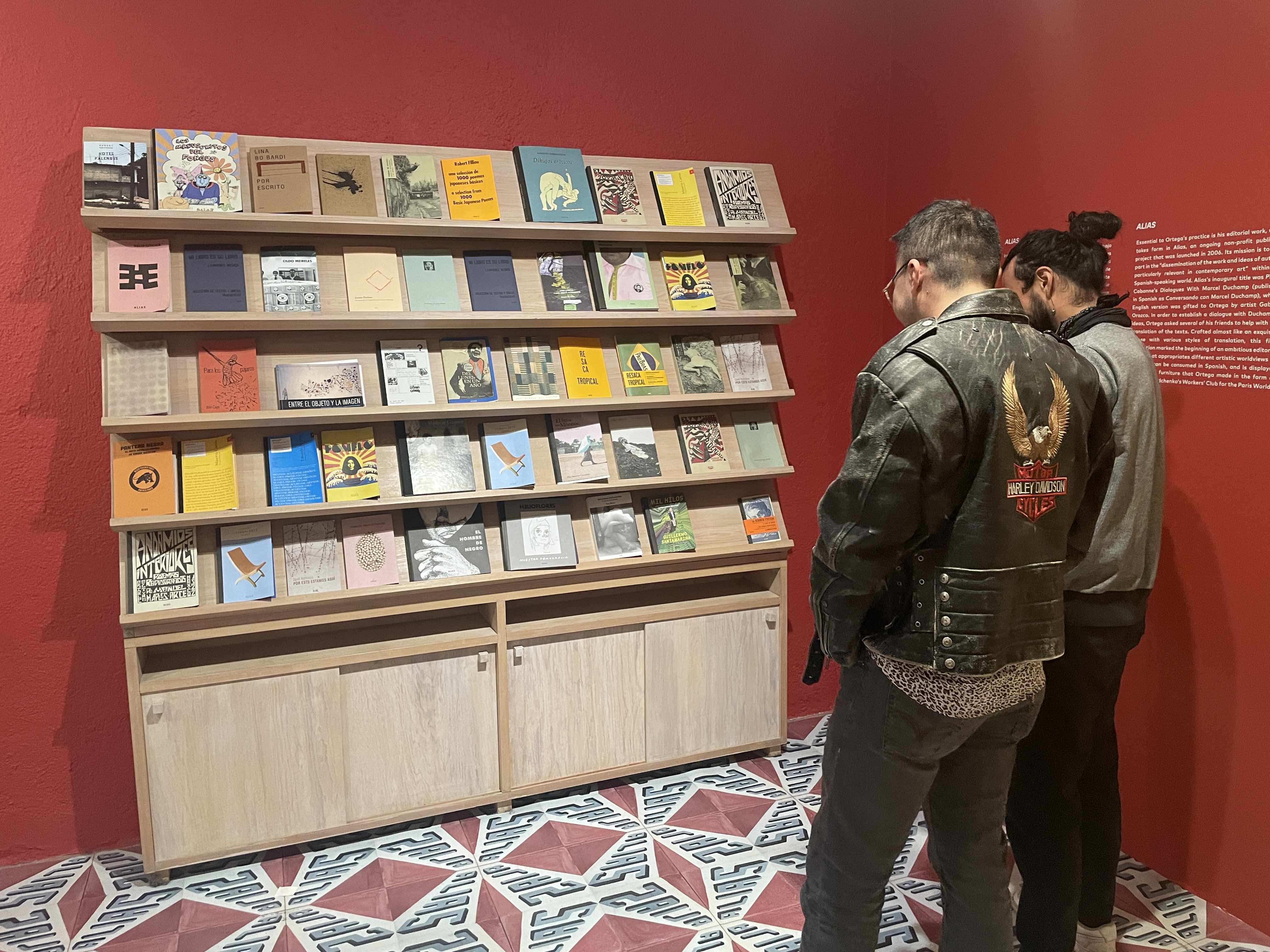
I conclude this text, which doesn't take itself too seriously, with an invitation to visit Pico y elote, just as long as after the selfies, you don't forget to sit down for a moment to leaf through the pages that await at the end. Then have a coffee, or better yet, a beer, and discuss what you've seen and read with friends. Make the book sculpture grow because otherwise, what is the point of all of this?
Translated to English by Sebastián Antón-Ojeda
*1: María Minera is an art critic. Her text Autoescuela tells the story of the events related to the Taller de los viernes. It can be downloaded on kurimanzutto's website.
*2: Quote from Alias' website.
Published on January 7 2024